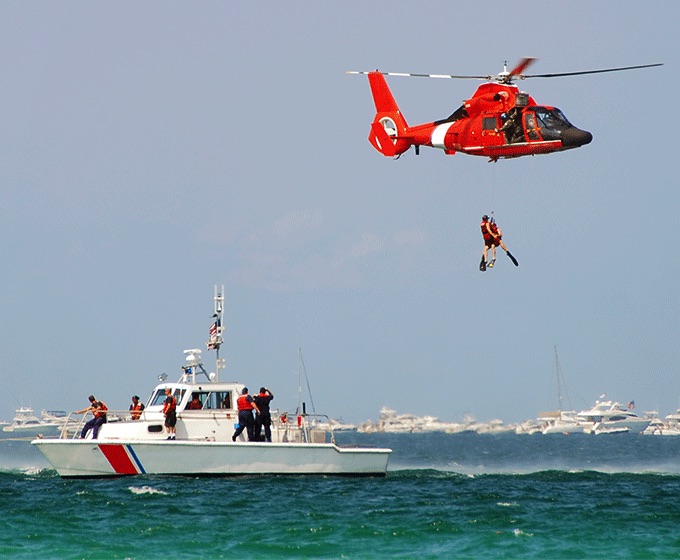Mechanical engineering professors Adel Alaeddini and Kiran Bhaganagar in UTSA’s Margie and Bill Klesse College of Engineering and Integrated Design are partnering with the U.S. Air Force and Coast Guard to study object interactions in open water. Their research, funded by a three-year, $350,000 grant, allows the team to examine the way natural forces such as tides, waves and wind impact the movement of objects in a body of water.
When an object is in the ocean, for example, environmental and structural factors can significantly impact the travel trajectories it will take. Throughout the course of this research, Alaeddini, Bhaganagar and several undergraduate, graduate and post-doctoral student researchers will use technical instruments to capture data points on how differently shaped objects interact with environmental factors including water currents, wind speeds, temperature and other variables.
The data will be used to develop computational models that may significantly improve water rescue opportunities related to downed planes or missing boats.
“We are designing our computational models to improve the odds of search and rescue efforts,” explained Alaeddini, an associate professor. “If someone or something were to fall from a boat, or maybe there was a downed aircraft, and search teams took some time to get to that part of the ocean, these models could be deployed to help them focus their efforts. Knowing the conditions and the person or object they are searching for, the models would give them some indication of the most likely places to prioritize in the search.”
The shape of an object can make a significant difference in the way the waves, current and wind manipulate its trajectory through open water. With that in mind, Alaeddini and Bhaganagar plan to test a series of shapes in different bodies of water to determine baseline data that computer systems can extrapolate to consider potential trajectories of irregular shapes.
“When we’re working with a non-spherical or a non-cubical object, it can become extremely difficult to estimate the way variables will impact potential trajectory,” explained Alaeddini. “What we are working toward is the use machine learning and data analytics to leverage our experimental data to shed more light on the complex relationship between the shapes and the natural forces.”
Throughout the term of the grant, the research team will conduct experiments in the Gulf of Mexico, the Atlantic Ocean and the Pacific Ocean.
“Beyond the shape, the variables of different environments can have a significant impact,” said Alaeddini. “It’s important for our model to consider potential differences to increase reliability.”
Alaeddini says that there will be many opportunities for students to support this research project throughout the coming years.
“I anticipate opportunities ranging from undergraduates creating differently shaped objects through additive manufacturing and conducting swimming-pool based tests all the way up to graduate, doctoral and postdoc students conducting field research in the ocean and analyzing the collected data,” he said. “There are many ways students can support this project while gaining hands-on knowledge of the processes involved. Whether they are mathematically inclined, enjoy coding or wish to better understand the technologies available at UTSA, it would be great to get them involved.”
The research led by Alaeddini, director of the Center for Advanced Manufacturing and Lean Systems, and Bhaganagar, director of the Center for Advanced Measurement in Extreme Environments, in the Klesse College of Engineering and Integrated Design is one example of the many hands-on learning opportunities available to students through the university’s Classroom to Career initiative, which incorporates experiential learning, including internships, service learning, undergraduate research and study abroad to help students gain the hard and soft skills in demand by employers. These hands on learning experiences are particularly important in linking classroom success to life after graduation for historically underserved populations such as the diverse student body at UTSA.
As part of its strategic plan, UTSA aims for 75% of its undergraduate students to participate in some type of experiential learning by the time they graduate.















